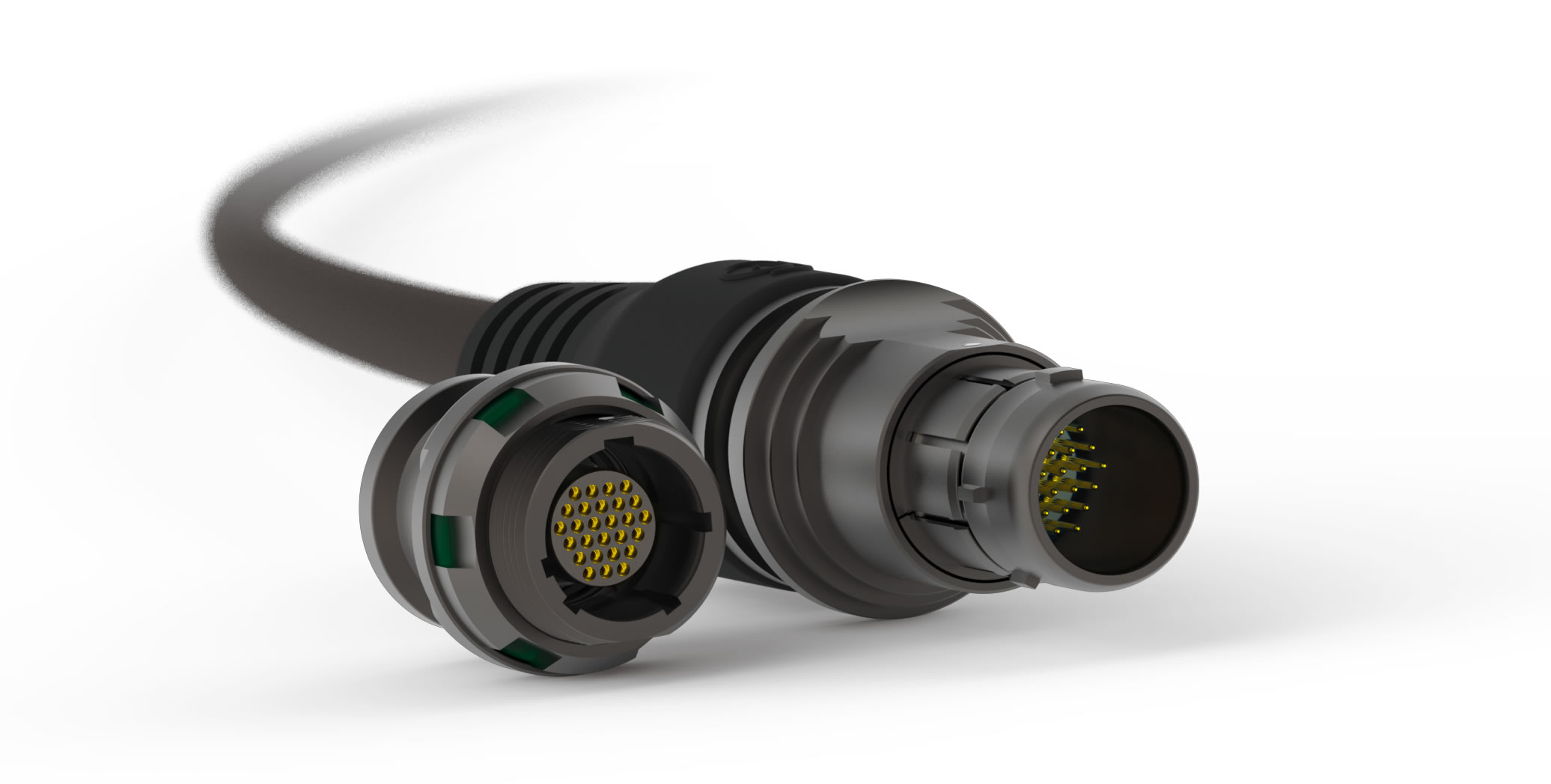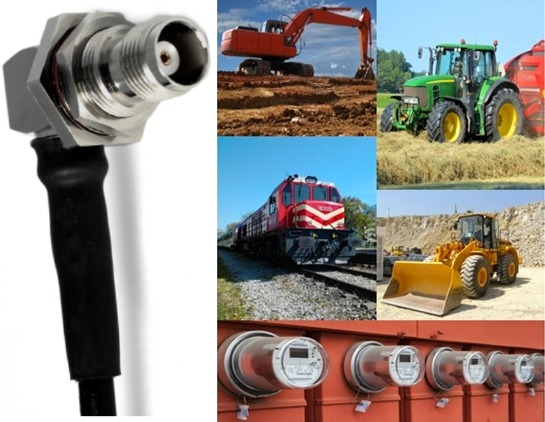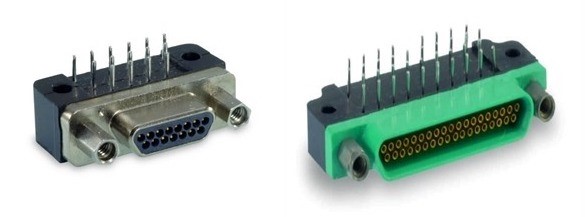Rugged Connectors Expand into New Applications
5G and the Industrial Internet of Things are pushing advanced electronics into rough new territory. Rugged connectors can provide the robust connectivity needed, although sometimes a custom connector is required.

Rugged connectors come into play when electronic equipment is designed for use in an extreme environment. This can be broadly defined: Extreme conditions may be present at a sporting event, power plant, mining operation, farm field, medical facility, or virtually anywhere conditions may be dirty, unpredictable, rough, or otherwise compromise the performance of electronics. Each connector, whether it be power, signal, fiber optic, or hybrid, must meet highly specific requirements to withstand the range of possible hazards.
Generally, no one-size-fits-all solution is available in this market. In some situations, a custom connector is the only option that will be successful. That may mean creating an entirely new design, or, as connector companies often do, modifying an existing connector. “For most commercial-grade functions, manufacturers of rugged connectors can customize a solution for your application,” said David Cianciolo, engineering director for Fischer Connectors. Custom connectors can extend lead times, noted Cianciolo. “However, on the plus side, you will likely find more personal assistance and engineering help with an experienced rugged connector company, which will shorten your learning curve a bit.”

The Fischer UltiMate™ Series is rugged, reliable, compact, lightweight, and highly configurable. It offers robust mechanical keying, IP68/69 sealing even unmated, 360° shielding, exceptional corrosion, shock, and vibration resistance, and 10,000-cycle durability ideal for harsh military, industrial, and transportation systems.
Secure connectors that can withstand shock, high vibration, debris, moisture, temperature extremes, and other harsh environment conditions without degrading power, signal, or data transmission are seeing increasing demand. As the Industrial Internet of Things (IIoT) brings precision electronics into new settings, the components that enable them must be up for the job. “Our products are being designed into new applications every day for all types of unexpected environments,” said Michael Comer, director of business development and product marketing for Amphenol RF.
When to Use a Rugged Connector
Rugged connectors are needed if the application will be operating in an environment that could bring electronics into contact with water, dirt, chemicals, radiation, extreme heat or cold (from -50°C to +150°C), processes such as sterilization, corrosive substances, or if the application is mission-critical and risk of failure needs to be mitigated as much as possible. Applications include aerospace, defense, medical equipment and devices, rail, heavy equipment, vehicles of all types, wireless sensing, and industrial connectivity. “Test and measurement applications also often use rugged connectors to protect the integrity of the data they collect,” said Cianciolo. Some applications, including mil/aero and medical, may require connectors to meet specific ingress protection (IP) standards.

Amphenol RF’s ARC line of rugged coaxial connectors and RF cable assemblies are engineered for harsh conditions.
New Trends and Technologies
Connector companies are responding to expanding demand for rugged connectors with robust new designs that accommodate high-speed data transmission and increased power. Rugged connectors are also being designed in smaller sizes and with reduced weights for medical, aeronautic, military, and other precision applications where space is limited or where payload must be kept as low as possible. “These challenges can be met with new plating technologies, compact designs, sealing, and modified coupling options to ensure a secure connection between two connectors,” said Wes Morgan, project management director for ITT Cannon Interconnect Solutions.
Material Choices
Rugged connectors are commonly made from nickel-plated brass. However, some applications call for aluminum, stainless steel, or even composite plastics. Brass connectors with nickel or chrome plating are highly wear-resistant and provide longer lifecycles than many other materials. Aluminum is often a good material choice if weight is an issue. Zinc-nickel plating can provide high conductivity and signal stability. In the radio frequency space, brass, stainless steel, and beryllium-copper are common material choices. Plastics may be a good option for limited reuse and disposable applications, such as medical device attachments, but comprehensive testing may be required to confirm durability.

ITT Cannon’s high-temperature MDM-PCB Micro-D (MIL-DTL-83513) connector (left) and MD* PCB Plastic Micro-D connector (right) are moisture-sealed for data, power, and signal transmission in harsh environments.
Sealing is perhaps the most critical part of making a rugged connector. When sealing against environmental contamination, an interface seal protects the junction between the two connectors, keeping harmful particles away from the connection area. “Mounting panel seals protect the contact areas and cable sealing rounds out the areas that are needed to protect the connector and the connection,” said Cianciolo. “Sealing materials include Viton, a fluoropolymer with low permeation and excellent chemical resistance. To protect against gases, connectors are hermetically sealed with glass, ceramic inserts, or epoxy.”
Connected, Lighter, Smaller
Manufacturers continue to demand rugged connectors that are smaller and provide wireless connectivity. Durability is also improving, with connectors and contacts that can achieve 10,000 mating cycles or higher. “With the onset of 5G connectivity, more devices will be connected to the cloud. Many of these will need to perform in harsh environments, some not yet encountered,” said Comer.
Mission-critical signals require greater EMI protection. “As the rate and frequency of signals continue to increase, the likelihood of interference or crosstalk also increases, creating the potential for data breaches, inaccurate mission intelligence, and possible loss of life,” said Morgan.
Miniaturization is perhaps the strongest design trend. Even though miniature connectors fit in tight geometries, Cianciolo cautioned that only a few can carry both power and signal. “If the pin size is too small, it may not carry the power required, or signal may be more susceptible to interference,” he said. “As the connector package gets smaller, so does the withstand voltage.”
As applications for rugged connectors expand, we will see continued design innovations. It is possible to design a single connector for an application today that would have required two or three connectors only a year ago to deliver the same capabilities. Increasingly, connectors can and do go everywhere — and with ruggedization, there are no exceptions.
Like this article? Check out our other Connector Basics, harsh-environment, 5G, and 2019 articles, and our Industrial Market Page.
- Creating Ideal Connectors for Rugged Conditions - January 9, 2020
- Rugged Connectors Expand into New Applications - September 10, 2019
- Counterfeit Connectors: A Matter of Life and Death in the Medical Device Industry - April 23, 2019





